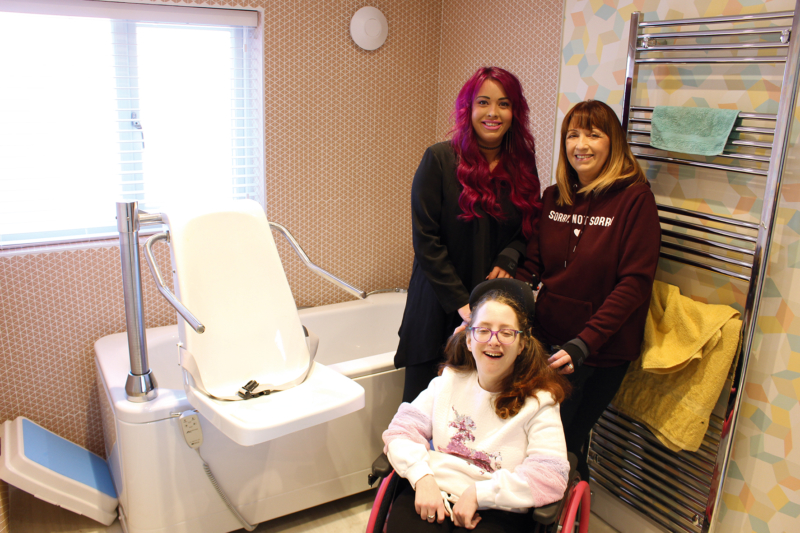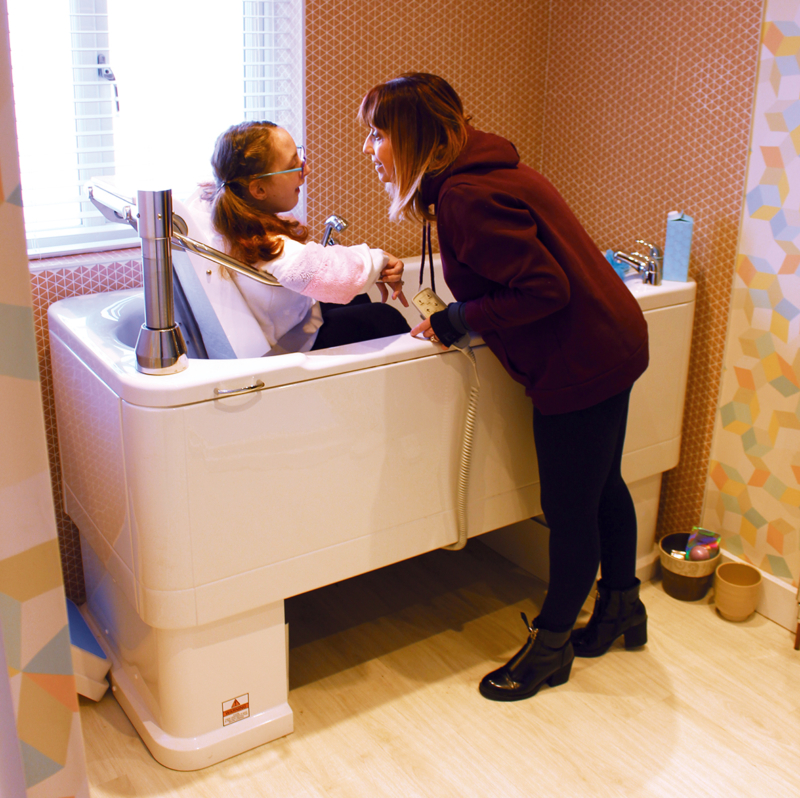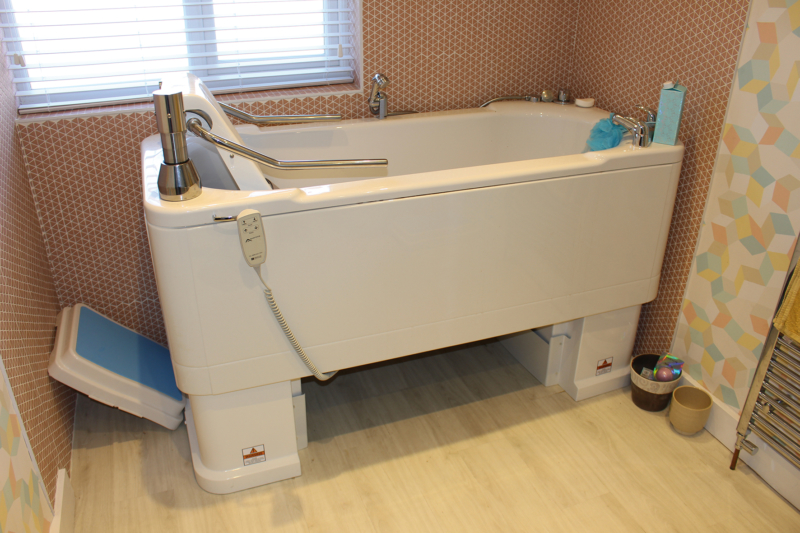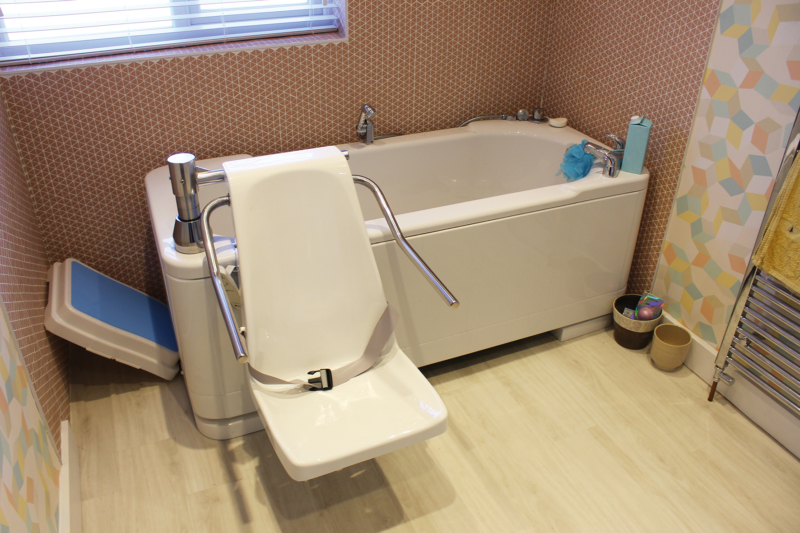Effectiveness of ensuring the right adaptation
For many, home is central to our identities (Mallett, 2004) and occupational wellbeing (Haak, Iwarsson, Fange, and Dahlin-Ivanhoff, 2007). For a person of increasing age, an appropriate home environment has been shown to be a key element of independence and being able to remain at home (Mahler 2014). Whilst the right home environment can have a positive and enabling impact on a person, an unsuitable one can have significant impact not only on wellbeing and occupational participation (Mallett, 2004) but also dignity (Gibson et al, 2012). For someone with a disability or long-term health condition, therefore, having a suitable home that meets their needs is of high importance.

Home modifications are the most common way of making a disabled person’s environment suitable for their needs and enable independent living, with occupational therapists being experts in this area. It is important however that adapting the home environment should provide an individualised and person-centred solution to the person and not just something to resolve a functional deficit (Department for Communities and Local Government, 2006). Particularly for families of disabled children where there are additional siblings, the home has to meet the needs of all family members, as both a functional and social space (Morgan, Boniface and Reagon 2016).

Bathing has been shown to have a positive impact on both physical and mental health (Goto, Hayasaka, Kurihara & Nakamura, 2018) and has numerous meanings beyond washing and keeping clean. For example, it can be a time to relax, or it can form part of a night routine for young children and so when bathing becomes problematic, it is important to recognise that the solution can be more than the functional ability to simply get in and out of the bath and wash.
When bathing becomes difficult for a person because of a physical impairment, making alterations to the bathroom will often be the most appropriate solution. Whilst addressing the current difficulties of the client it is important however that, where possible, any home adaptations are flexible enough to accommodate future changes in the person (Aplin, de Jonge and Gustafsson 2013) and can suit long term needs (Heywood 2004). Occupational therapists are adept at clinical reasoning skills and should be considering not just immediate needs but the likely future needs of the client, be that in the event of a deterioration, or improvement in function (Department for Communities and Local Government, 2006). Lack of consideration of changing needs has been shown to be a concern for families (Aplin, de Jonge and Gustaffson, 2013). This has been found to be of particular significance for children where building work was drawn out and the adaptations that were recommended are then not fit for purpose by the time they are completed (Morgan, Boniface, and Reagan, 2016). Aplin, de Jonge and Gustaffson (2013) found that the future independence of their child is important to families when planning adaptations. Furthermore, bathrooms for children are often designed for parents to care for them, and not necessarily consider them being able to do that task independently in the future (Roy, Rousseau, Allard, Feldman, and Majnemer,2008) therefore understanding disability and being able to make suggestions for future proofing is of real value to parents of disabled children (Picking and Pain 2003).

Parents have also reported that seeing adaptations being completed has forced them to face the reality of having a child with additional needs (Morgan, Boniface and Reagan, 2016) and so providing adaptations that negate for further alterations can reduce any potential future emotional stress on families, or indeed disruption. In addition, Beresford and Oldman (2002) identified that creating a bathroom for disabled child does not necessarily suit other family members and so clinical reasoning should always include consideration of other household members, carers and general preferences.
The Aquanova Gemini 2000 height adjustable bath is a multifunctioning bath that meets the needs of people with complex disabilities but can also be used by other family members if it becomes the only bath in a household. Because of the longer length, it also has the versatility to suit either a child or adult so there would be no requirement to replace as a child grows and therefore should be seen as a sensible and efficient solution to bathing needs.

From a funding perspective, the provision of adaptations that can be future proofed will always be more cost effective. Many adaptations are provided via a disabled facilities grant (DFG) and as applicants are limited to the frequency that they can apply for a grant; it is essential that it is used wisely. Because of the specialist nature of baths such as the Gemini 2000, single handed care can often be supported, something that can be important where there is limited space, for parents who want to bathe their child but also for the individual who is having their personal needs cared for, having fewer people in the bathroom can be significant for their dignity.
Bathing is a very personal experience, and this should always be recognised when determining the most appropriate solution. Nevertheless, whatever the solution, being able to meet both immediate needs and longer-term needs, with a bath such as the Gemini 2000, will have a positive impact on the user, carers as well as being financially more viable.
References
Aplin, T., D. de Jonge, and L. Gustafsson. (2013). Understanding the dimensions of home that impact on home modification decision making. Australian Occupational Therapy Journal 60 (2): 101–109.
Department for Communities and Local Government (2006). Delivering Housing Adaptations for Disabled People: A Good Practice Guide. DCLG.
Gibson, E, Secker, B, Rolfe, D, Wagner, F, Park, B, Mistry, B (2012) Disability and dignity-enabling home environments. Social Science and Medicine 74: 211-219.
Goto, Y, Hayasaka, S, Kurihara, S & Nakamura, Y (2018). Physical and mental effects of bathing: a randomised intervention study. Evidence Based Complementary and Alternative Medicine. doi: 10.1155/2018/9521086
Haak, M, Iwarsson, S, Fange, A, Dahlin-Ivanhoff, S (2007). Home as a signification of independence and autonomy. Experiences among old Swedish people. Scandinavian Journal of Occupational Therapy. 14:1 16-24.
Heywood, F. (2004) The health outcomes of housing adaptations, Disability & Society, 19:2, 129-143
Mahler M, Sarvimaki A, Clancy A, Stenbock-Hult, B, Simonsen, N, Liveng, A, Johannesen and A, Horder, H (2012) Home as a health promotion setting for older adults. Scandinavian Journal of Public Health 42: 36–40.
Mallett, S. (2004). Understanding home: a critical review of the literature. The Sociological Review, 52(1), 62-89.
Morgan, D, Boniface, G, and Reagon, C. (2016) The effects of adapting their home on the meaning of home for families with a disabled child.
Picking, C., and H. Pain (2003). Home Adaptations: User Perspectives on the Role of Professionals. The British Journal of Occupational Therapy 66 (1): 2–8
Roy, L., J. Rousseau, H. Allard, D. Feldman, and A. Majnemer. 2008. Parental Experience of Home Adaptation for Children with Motor Disabilities. Physical & Occupational Therapy in Paediatrics 28 (4): 353–368

